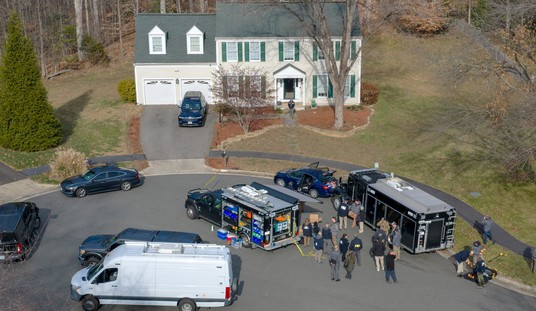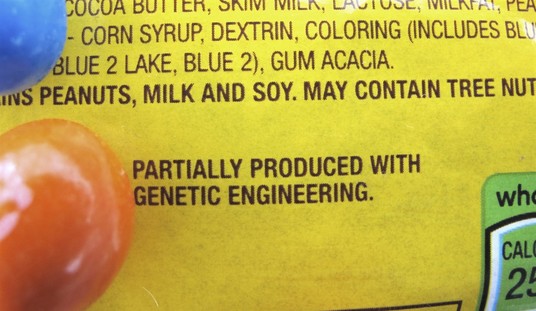Matthew Herper, blogging at Forbes, writes that the super strain of E. coli which killed 17 and sickened a thousand persons in Europe was sequenced within hours by a lab in China using technology that is now commercially available. “The genetic code of the dangerous E. coli bacteria strain that has killed 17 and sickened more than 1,000 was sequenced in just three days by scientists BGI, a gene research institute in China.” That enabled scientists and policymakers to rapidly understand what they were dealing with.
The three-hour turnaround time was until recently unheard of. The sequence was done not on the big, expensive DNA-sequencing machines made by Illumina, Life, and 454 Life Sciences but on small desktop decoders made by Ion Torrent, a start-up that was purchased by Life last year. I profiled the entrepreneur behind Ion Torrent in this Forbes cover story from earlier this year. …
Jonathan Eisen, a microbial geneticist at UC-Davis, says that sequencing the E. coli microbe helps scientist figure out from which olderstrains the new bacteria evolved, and whether it might have picked up bits of genetic code that make it more dangerous by trading bits of DNA sequence with other bacteria. It’s possible the genome could allow researchers to figure out exactly what makes this particular bacteria so toxic.
If there were a case of bioterrorism, the DNA sequence would be invaluable in determining that, Eisen says. There is no evidence that is the case here, though.
If it were actually bioterrorism, however, how would one know? Probably by genetic analysis, by teasing out a bug’s history from its internal log.
Bio-IT World reports that the strain was particularly deadly, causing bloody diarrhea and kidney failure. “Comparative sequence analysis showed that this bacterium has 93% similarity with the EAEC (enteroaggregative) 55989 E. coli strain, previously isolated in the central Africa and linked to cases of serious diarrhea. The new European strain of E. coli also features DNA sequences related to those involved in the pathogenicity of hemorrhagic colitis and hemolytic-uremic syndrome, potentially acquired through horizontal gene transfer. The genome also carries a number of antibiotic resistance genes, including resistance to aminoglycoside, macrolides and beta-lactam antibiotics.”
Food Safety News says that German experts have not given any “credence to the possibility of bioterrorism”. There’s always the alternative conspiracy theory, which is the shadow explanation of every catastrophe, from the World Trade Center attack to the emergence of AIDS: that is It’s Always America’s Fault (IAAF). Bio-fortified examines speculation that the E coli strain was caused by “GM foods”. It concludes that “the answer is almost certainly not. … long before GM crops existed, we knew that bacteria swap genes like crazy, and rates of gene moment were the, and still are, easy to detect with the right methods. Bacteria swap genes in everybody’s gut whether there is GM food there or not. The GM food issue is irrelevant to this rapid bacterial evolution. Horizontal movement is what bacterial genes do naturally.”
Whatever the real cause, it is not the first E. coli outbreaks that has been linked with the fear of man-made pathogens. Back in 2006 Slate examined a pair of outbreaks. Though it was worrisome, the conclusion of investigators at the time, as with the Germans, was that the new virulent strain was hatched in the greatest bio-lab of all: Mother Nature. Nature had attacked, as it has always been attacking from the dawn of time.
In 2006, a pair of major E. coli outbreaks swept across the country. One was carried on spinach, the other on lettuce. The spinach outbreak caused 204 illnesses and three deaths. The lettuce outbreak made 71 people sick. In both outbreaks, many people had to be rushed to the hospital. Some got away with just bloody diarrhea. In other cases, the bacteria released toxins into the bloodstream that caused kidneys and other organs to shut down. …
Scientists noticed that the most recent outbreaks were particularly brutal. The bug from 2006 sent three to four times more people than expected to the hospital. … To figure out what makes this new strain so vicious, the scientists selected a microbe from the 2006 spinach outbreak and sequenced its entire genome. They discovered that it is not a minor variation on the basic E. coli O157:H7 plan. It is a major overhaul. Hundreds of its genes can’t be found in other strains. It has lost hundreds of others. And many of the genes it shares with its close relatives have mutated. …
The scientists concluded that at some point in the not-too-distant past, this strain of E. coli O157:H7 evolved rapidly into a far meaner pathogen than its ancestors. Natural selection altered its genes quickly, thanks to the ability bacteria have to reproduce in as little time as 20 minutes. Speeding up their evolution even further was their ability to take in DNA from other microbes, even from species that are only distantly related. The genomes of bacteria are being continually rejiggered into new combinations of genes.
Nature is a factory of new diseases and unlike human beings, it cannot be deterred by threats of nuclear annihilation or economic sanctions. It simply is, and humanity has to live with and inside it. Objectively any defense against “bioterrorism” would for the most part be oriented against naturally occurring threats because that is the largest source of threats: the biosphere itself.
The man behind the desktop sequencers used in China is Jonathan Rothberg, who believes that powerful, onsite genetic analysis tools will be the next X-ray. At the time he launched it, there were doubts that desktop genetic sequencers would have much value. Events may change all that.
“The machine that could change your life is a compact device, only 24 inches wide, 20 inches deep and 21 inches high. At a glance you might mistake it for a Playskool toy–or, better yet, the Apple II computer, which sparked a revolution. Indeed, this gizmo, developed in a drab office park overlooking a duck pond in Guilford, Conn., could have as dramatic an impact as any technology since the personal computer and help kick off a market that one day could be worth perhaps as much as $100 billion. …
Invented by engineer and entrepreneur Jonathan Rothberg, such desktop gene machines could transform medicine, agriculture, nanotechnology and the search for alternative fuels. Using DNA sequencing, Rothberg says, doctors in the not-too-distant future will finger genetic weak spots in tumors and treat cancer patients with customized drugs. (This is already happening at some cancer centers.) Kids born with rare diseases will get large portions of their genome decoded to pinpoint the cause, eliminating guesswork and misdiagnoses.
Outside the lab, rescue workers in the Third World might use portable gene machines to trace bacteria or viruses causing waterborne epidemics. Airport officials could take genetic samples from travelers to track infectious bacteria and viruses before they become outbreaks. Engineers can use DNA readers to concoct designer microbes to grow future fuels. DNA sequencing will help farmers breed supercrops that grow faster, resist pests and drought and need less fertilizer. Synthetic biologists might harness bacteria to make laundry detergent, clothes, furniture, even concrete that self-heals cracks.
“Sequencing is going to affect everything,” says Rothberg, 47. “This is biology’s century–just [as] physics was the foundation of the last century.” Citing the $100 billion medical imaging industry, he boasts, “I believe sequencing will be that big.”
Time will tell whether sequencing is the Next Big Thing that Rothberg predicts. But one thing appears constant true. It is the human ability to adapt, the operation of intelligence upon the challenges thrown up by nature, that is the key to mankind’s survival on earth. Whether it was the utilization of fire, or the development of the sailing ship, or GPS or the Internet, man’s strongest survival skill has always been his ability to create technology. Technology is man’s principle mode of dialog with nature. This dialog, not a retreat into some imagined and simpler Eden is the key to survival, which is by no means guaranteed to humanity. For all the attractions of windmills and village life, there is no way back to the Garden. For all the remainder of human history, environmentalism will mean science and technology.
In the sweat of thy face shalt thou eat bread, till thou return unto the ground; for out of it wast thou taken: for dust thou [art], and unto dust shalt thou return. …
Therefore the Lord God sent him forth from the garden of Eden, to till the ground from whence he was taken. So he drove out the man; and he placed at the east of the garden of Eden Cherubims, and a flaming sword which turned every way, to keep the way of the tree of life.
Now where was that sequencer again?










Join the conversation as a VIP Member